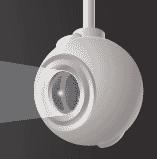
Look to the Future
Technology continues to drive new video surveillance system capabilities
- By Frank Defina
- Apr 02, 2008
Over the past decade, the security
industry has gone through significant
changes, driven by the times
we live in, technology and end users
looking to improve the functionality
and cost-efficiency of their operations.
Consequently, the role of influencers outside
of traditional security management
continues to evolve and play more prominently
into how security systems are
designed, implemented and managed.
From a technology perspective, the
widespread acceptance of and growing
dependence on the converged network
have created a corporate nirvana where
IT and security management ply their
trade—this virtual destination we refer to
as the enterprise. With all these variables
today, the influencers driving video and
security technologies are growing as
complex as the solutions themselves.
Imaging in Focus
Video surveillance system technology,
although a single component in the new
security system model, is largely dictating
the pace at which networked and
enterprise-level system technologies
have progressed. In fact, one area in particular
holds the key to the continued
evolution of video surveillance and
security systems—imaging. Improving
image acquisition quality and performance
has long been the impetus behind
the development of related system components
and processing devices.
Breakthroughs in imaging technology
specifically designed for security applications
clearly can be related to developments
in higher resolution. Notable
examples include the introduction of
CCD image-based video surveillance
cameras and color CCD cameras. Two
other notables are IP video surveillance
network cameras and upcoming network
cameras with new chip sets and advanced
compression solutions.
Each of these imaging breakthroughs
will affect the development of the devices
they interact with down the system chain.
The network existed across many different
business operations and applications
well before the first professional security
IP cameras were introduced by Panasonic
in 2001, but these early cameras quickly
caught the attention of industry professionals.
After all, the concept of networking
was not new at the time, and access
control was already benefiting from network
connectivity. Looking at the inherent
benefits of networked platforms, the
thought of a single, cost-efficient transmission
backbone for security and business
systems holds countless possibilities.
The New Generation
Just a few years ago, networking video
surveillance systems had many limitations
in terms of image quality, frame
rate, bandwidth demands and storage
requirements. The applications for IP
video devices were limited at best. But
new technologies have changed all this.
As image capture technologies are developed
that deliver higher resolution and
better color reproduction, they have driven
the development of new processing
technologies and software-driven applications
that deliver advanced capabilities
only possible on a digital networked platform.
Panasonic’s i-Pro line of network
cameras is one example because the technology
delivers many performance benefits,
including the manner in which lighting
conditions are captured and processed
to a multitude of DSP-enabled features.
Now, we are on the cusp of the next
generation of IP imaging devices that
combine recent advancements in chip
design with better compression technologies.
IP cameras with high-definition
quality and minimal bandwidth requirements
are the next system breakthrough.
Once again, core video imaging technology
is driving this development,
specifically the development of new
megapixel chip sets designed for HDquality
video surveillance applications.
Although megapixel chips are widely
used in other image devices like broadcast
cameras and low-cost consumer still
cameras, they have yet to address the
specific parameters required for professional
networked video surveillance
applications given their voracious
appetite for bandwidth.
Experts continue to pursue developments
in megapixel imaging that deliver
exceptional performance for the security
market. Panasonic’s new series of
megapixel cameras incorporates many of
these developments and feature sets that
used to be reserved for more advanced
analog video surveillance cameras, such
as day/night operation, adaptive black
stretch to control contrast and high-speed
electronic shutters to accommodate varying
light sources.
Additional Developments
Feature-enhanced megapixel IP video
surveillance cameras are the critical component
required for advanced video analytics
development. They provide volumes
of detailed video data that will
allow video analytic middleware to perform
more complex operations with
greatly expanded policy-driven features,
such as motion detection and object
tracking.
The bandwidth and storage capacity
requirements for megapixel IP cameras
have been the biggest deterrent to their
widespread acceptance in the market,
which has typically resulted in their classification
as specialty cameras. This too
is quickly changing.
With the development of H.264 compression,
the bandwidth and recording
capacity requirements of megapixel IP
cameras are being reduced dramatically—
in most cases by multiples in the
double digits.
New megapixel IP video surveillance
cameras will have a dramatic influence on
the way video surveillance systems will
be configured, managed and recorded.
The high efficiency of these IP megapixel
cameras allows them to be deployed in
place of conventional IP cameras with
advanced video analytics and much
greater functionality via push technology.
This also can reduce greatly the number
of video displays needed to monitor largescale
systems, the number of monitoring
staff required and the server/recorder
capacities to record pertinent action in
real time at full frame
rates.